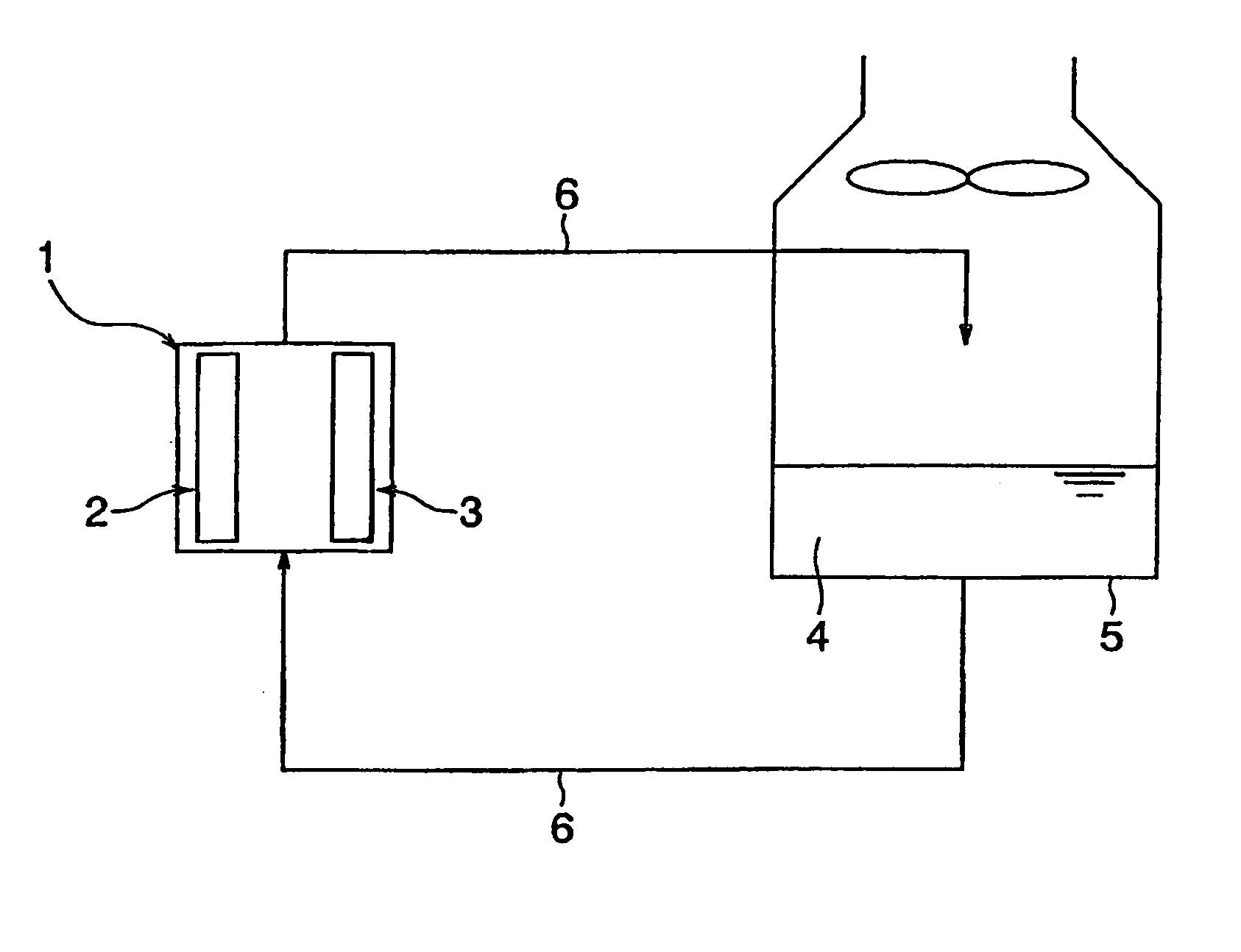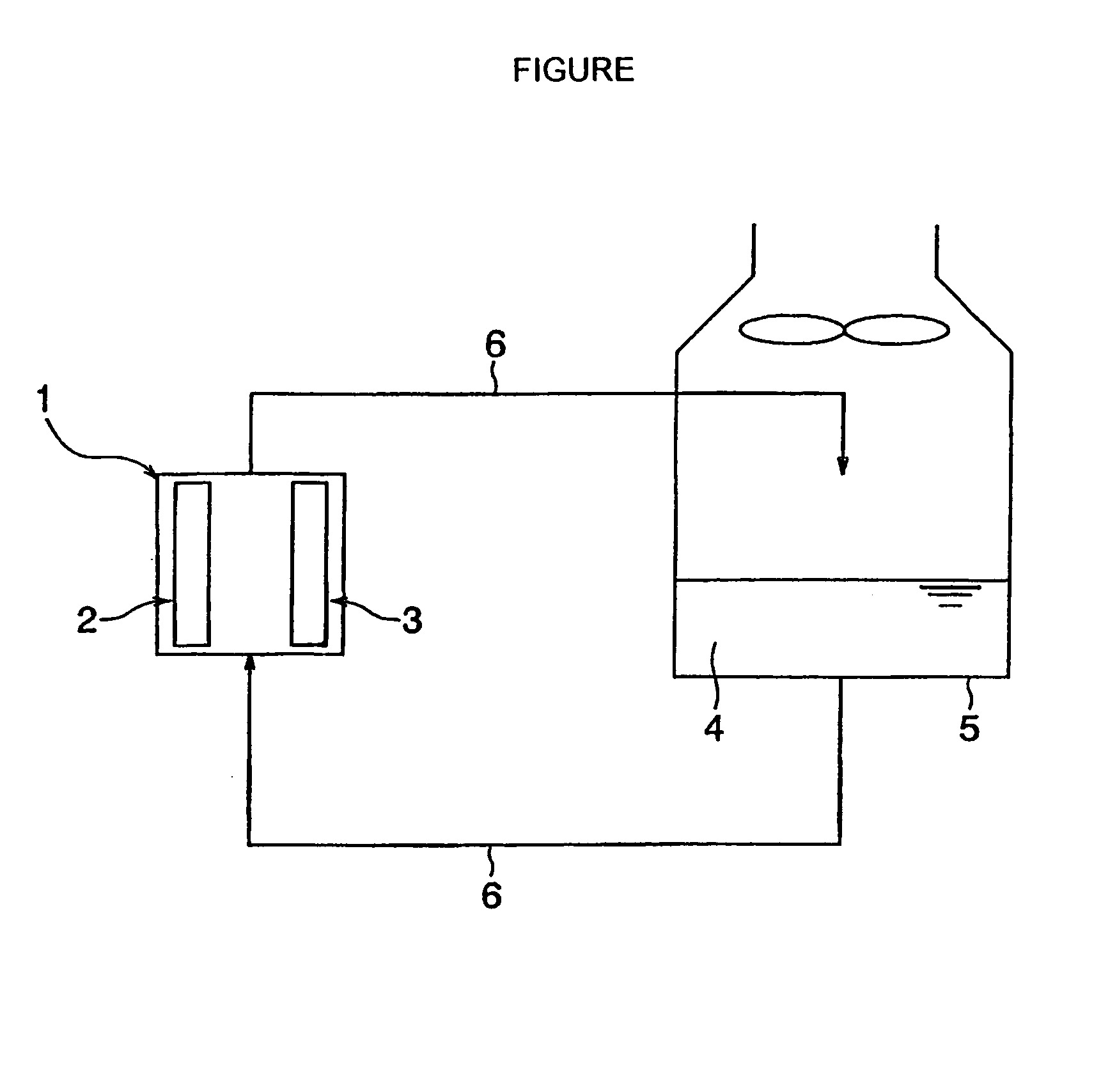Electrochemical sterilizing and bacteriostatic method
a technology of bacteriostatic method and electrochemical sterilization, which is applied in the field of electrochemical sterilization or bacteriostatic method of microorganisms, can solve the problems of legionella bacteria propagation being social problems, hot water supply temperature tends to drop, and legionella bacteria propagation is unavoidable, so as to suppress the propagation of microorganisms
- Summary
- Abstract
- Description
- Claims
- Application Information
AI Technical Summary
Benefits of technology
Problems solved by technology
Method used
Image
Examples
example 1
[0059] Electrodes prepared by forming conductive diamond in a thickness of about 2 μm on a mono-crystalline silicon substrate having a thickness of 1 mm by the heat filament CVD process were used as an anode and a cathode, respectively, and the both electrodes were disposed such that a distance between the electrodes was 1 mm, to prepare an electrolytic cell shown in FIG. 1. The both electrode had an electrode area of 70 cm2.
[0060] Water to be treated containing 58,000,000 CFU / L of Legionella bacteria and adjusted so as to have a chloride ion of 30 ppm by dissolving salt therein was prepared and subjected to electrochemical treatment by passing an electric current of 0.5 A / dm2 therethrough while supplying the water to be treated in a proportion of 160 liters / hr to the electrolytic cell. The water to be treated after storing for 60 minutes was analyzed. As a result, 99.99% or more of the Legionella bacteria were extinct. According to the analysis using a DPD reagent, the water to be...
example 2
[0061] The treatment was carried out under the same condition as in Example 1, except using 200 ppm of a chloride ion and passing an electric current of 0.25 A / dm2. The water to be treated after storing for 60 minutes was analyzed. As a result, 99.98% of the Legionella bacteria were extinct.
example 3
[0062] The treatment was carried out under the same condition as in Example 1, except using 200 ppm of a chloride ion and passing an electric current of 0.5 A / dm2. The water to be treated after storing for 5 minutes, 20 minutes and 60 minutes, respectively was analyzed. As a result, 99.98%, 99.99% and 100% of the Legionella bacteria were extinct, respectively.
PUM
| Property | Measurement | Unit |
|---|---|---|
| Fraction | aaaaa | aaaaa |
| Electrical conductor | aaaaa | aaaaa |
| Efficiency | aaaaa | aaaaa |
Abstract
Description
Claims
Application Information
 Login to View More
Login to View More - R&D
- Intellectual Property
- Life Sciences
- Materials
- Tech Scout
- Unparalleled Data Quality
- Higher Quality Content
- 60% Fewer Hallucinations
Browse by: Latest US Patents, China's latest patents, Technical Efficacy Thesaurus, Application Domain, Technology Topic, Popular Technical Reports.
© 2025 PatSnap. All rights reserved.Legal|Privacy policy|Modern Slavery Act Transparency Statement|Sitemap|About US| Contact US: help@patsnap.com


